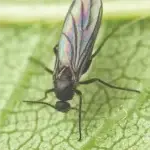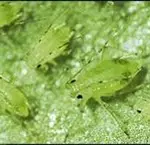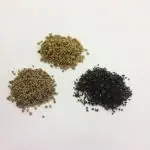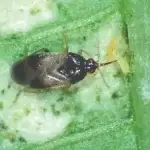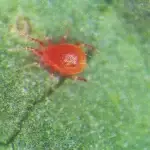Capsicums
Overview
Many Australian capsicums are still grown outdoors in Queensland however growers in South Australia contribute strongly to the year-round supply thanks to greenhouse technology.
Capsicums are attacked by a range of pests, especially Western Flower Thrips, Two-Spotted Mite and aphids.
Western Flower Thrips can also transmit Tomato Spotted Wilt Virus and no capsicum varieties have complete resistance to this virus. These pests have become resistant to many of the insecticides commonly useful for their control.
Secondary pests that cause problems in varying degrees of severity include Broad Mite, caterpillars (including heliothis), green vegetable bugs, leafhoppers, mealybugs, mirids, and whiteflies.
Biological Services has a suite of beneficial insects and mites to help control most of the key pests in capsicums. Our capsicum IPM program has proved very successful even in high pest-pressure areas such as Virginia, on the Adelaide Plains.
We regularly work with growers to implement and monitor IPM programs for crops of capsicums in Western Australia, South Australia, Victoria, and Tasmania.
Signs you have Capsicums pests
The key to controlling pests in your greenhouse capsicums effectively, is detecting them early and introducing beneficials at the right moment.
- Western Flower Thrips. You can easily see thrips in the flowers, leaves and stems. They cause considerable scarring damage to capsicum fruit which can downgrade your fruit quality. However, the main issue is that Western Flower Thrips are the main vector of Tomato Spotted Wilt Virus among capsicum, and once infected, plants won't recover.
- Two-Spotted Mite. Leaf damage (speckling) will occur when the infestation level has reached a moderate level, followed by webbing of leaves in heads causing severe stunting or plant death. This is a serious pest because it is resistant to nearly all miticides and breeds quickly in warm/dry growing conditions inside greenhouses. It is critical to detect mite activity early.
- Aphids, Mealybug or whitefly. Look for honeydew and sooty mould on the leaves. You can detect adult whitefly by disturbing the heads or leaves of the capsicum plants, especially plants along the perimeter, corners and near entrances of your greenhouse.
- Broad Mite. You cannot see Broad Mite with the naked eye. Distorted growing tips on young foliage and severe growth ceasing are symptoms of damage.
- Caterpillars. Chewing damage to the foliage is a sign you have caterpillars. Heliothis can enter the fruit directly.
- Mirids. Check for these pests in flowers and growing tips of capsicum plants. Mirids can cause permanent damage to the growing tips if you don’t control them in time, leaving the plant permanently stunted or “blind” at the growing tips.
- Green Vegetable Bugs. These pests are good at hiding in the crop to avoid detection. It’s common for growers not to notice their presence until they spot the characteristic feeding marks when packing in the shed.
- Fungus Gnat. These aren't usually a problem in soil-grown capsicums but can be a pest in hydroponic operations.
Products you can use to control Capsicums pests
Biological Services produces a range of products to control pests among greenhouse crops, including those that have grown resistant to pesticides.
You can also use sticky traps and rolls to support your IPM program. These will help you monitor and mass-trap thrips, winged aphids, Fungus Gnat, Mirids, and whitefly adults.
Other tips for managing pests in your Capsicums
We recommend that you practice good crop hygiene, screen pests where you can, and start your IPM program with clean seedlings that are free of residually toxic pesticides.
Remove any virus-affected plants as soon as you see them to prevent the virus from transmitting through your crop.
To maintain good levels of Western Flower Thrips predators in your capsicum crop, it is important to have plants flowering at all times. The pollen sustains predators such as Orius and Cucumeris.
Follow good irrigation practices to avoid unnecessary disease outbreaks that will require several fungicide applications to correct. While fungicides are not as disruptive as toxic insecticides in IPM programs, overuse can reduce beneficial populations.
Your local Biological Services consultant can provide year-round, professional crop monitoring and expert IPM program advice.
Get tailored advice for your commercial crop
To speak with one of our qualified consultants about your current commercial crop challenge or to learn about the benefits of the IPM maintenance and monitoring services we provide, contact us.




